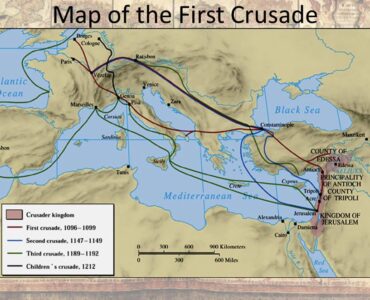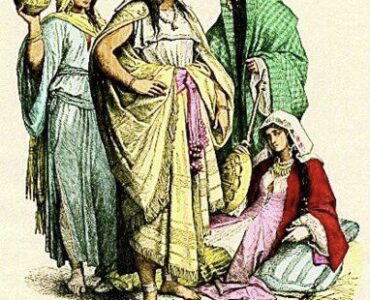
The End Of The Middle Ages
The last several centuries of the near millennium of interaction between Islam and Christendom saw a number of events that served as a kind of transition from the Middle Ages to a new era of international engagement. Two events in particular, the fall of Constantinople in the middle of the fifteenth century and the final expulsion of Muslims from Andalusia at the end of that century, illustrate this transition.
Beginning in the eleventh century the Turks, both armies and tribesmen, had taken over a significant part of Anatolia from the Byzantines. The frontier between Islam and Christendom, defined for centuries by the Greek Christian hold on the eastern borders of Byzantium, began a process of redefinition. The Turkish Empire, first under the Seljuks and then the Ottomans, grew into one of the three great empires in the history of Islam. Much of that growth was at Christian expense. In the mid-1300s a Byzantine contender to the throne brought over a Turkish army as an ally, giving the Turks a hold on the European side of the Dardanelles. They occupied the ancient city of Gallipoli as a garrison and moved quickly over other parts of what was then known as Thrace. Soon they had gained control of all of the Balkan peninsula, and in 1430 the Turks conquered the Byzantine city of Thessalonica. Less than a quarter century later, under the leadership of the sultan Mehmed II, they were able to mount their successful siege of Constantinople.
For some eleven hundred years of its more than two thousand years of existence, Constantinople had stood as the capital of the Byzantine Empire, an international city of fame, beauty, and repute, and the seat of eastern Christianity. It had been besieged many times in its long history, but during the rule of the Byzantines, Constantinople had been captured only by western Christians in the ill-fated Fourth Crusade. In 1261, a half century later, it was recaptured by the Byzantines. By the middle of the fifteenth century the Byzantine Empire had long been in decline, caught in the middle of struggles between east and west. Suffering from internal political strife, the population of Constantinople had shrunk drastically over the centuries. Nonetheless, it remained a tempting plum for Muslim military objectives. Its fall to the invading Turks in 1453 signaled a dramatic change in the power relationships between Islam and Christendom. Mehmed II, as ruler of Constantinople, became the titular heir of the Roman Empire, and the specter of a Muslim takeover of all of Europe was raised anew.
This Anatolian base gave the Ottoman sultans the opportunity to lay siege on Vienna in 1529, and by 1542 they were in control of Hungary. They were perceived by western Christians to be a more potent threat to the integrity of Europe than the Muslims who had been confined to the lower part of the Iberian peninsula were. In the fifteenth and succeeding centuries Muslim naval forces roamed the Mediterranean, attacking European ships as well as coastal towns. By the beginning of the seventeenth century, Algerian and Moroccan sailors under Ottoman control raided as far as the southern coasts of England and Ireland.
The conquest of the great Byzantine city of Constantinople had been the goal of Muslims since the seventh century. The city had been besieged repeatedly but unsuccessfully, and it remained a tempting plum for Muslim military commanders. Several decades after this drawing was made in 1422, the city was successfully conquered by the Ottoman sultan Mehmet II.
Muslim fortunes went otherwise in Spain, where after the glory of ninth- and tenth-century Córdoba, and the succeeding rule of the Almoravids and Almohads from North Africa, they suffered a steady loss of territories under the Christian reconquering forces. Initially Muslims under Christian rule, called mudejars, were the recipients of a policy of toleration for the so-called People of the Book. They were permitted freedom of worship and the right to be governed under their own laws. Gradually, however, this gave way to increased forms of intolerance and persecution. Muslims in Christian territories were forbidden from making the call to prayer, perform public sacrifice during their feast days, or going on pilgrimage, and many mosques were converted into churches. Muslims were forced to wear special kinds of dress, as they had previously required their Christian citizens to do, and they had to prostrate themselves before the cross as it was carried in procession. The two communities became completely segregated, and the death penalty was meted out to Christians who tried to convert to Islam. A rising tide of anti-Semitism had serious consequences for both Muslim and Jewish communities in Spain.
In 1474 Ferdinand II of Aragon and Isabella of Castile, husband and wife, succeeded to conjoint but separate thrones. For the first time in nearly eight centuries the Iberian peninsula was governed by one united authority, the Christian kingdoms of Castile and Aragon. The king and queen were to be remembered as “the Catholic monarchs,” a measure of their dedication to the reuniting of all of Spain under Christendom. By 1492 they had recovered Granada, the last stronghold of Muslim occupation. With that conquest the struggle for control of Andalusia, which had continued between Muslims and Christians for some eight centuries, ended with a victory for Christianity and control of the Iberian peninsula. The takeover was followed by intense efforts at conversion, accompanied by translation of the Christian scripture and liturgy into Arabic. Soon baptisms were no longer optional but forced, and by the turn of the fifteenth century not only in Granada but throughout Castile Muslims had to choose between conversion, emigration, or death. Because the emigrants had to leave their children behind, most chose to stay and “convert.” Of course many continued to practice their Islamic faith in secret (thereby known as Moriscos), remaining for generations to come an unpersuaded, unassimilated, and unaccepted segment of Spanish society. After a rebellion in the next century they were finally expelled from the land that earlier had seen, at least for awhile, one of the few examples of Christian and Muslim cultural harmony.
Despite the fact that the spread of Islam was often peaceful and sometimes even received favorably by Christians into whose territories it moved, and despite the protected status afforded by Islam to its fellow “People of the Book,” the centuries of Christian and Muslim interaction were marked as much by strife and warfare as by harmonious relations. Yet official tensions or hostilities at the political level often were balanced by local cooperation and even friendships between members of the two faiths. Trade and commerce between east and west continued in the same areas in which parties were technically at war with each other. Both communities illustrated in their respective leadership examples of tolerance and of prejudice, sometimes with protection offered to their subject minorities and other times subjection to the extremes of persecution. By the close of the Middle Ages, hostilities between Islam and western Christendom once again were intense, with active warfare to continue on a number of fronts for several centuries.
Following the Christian reconquest of the Iberian peninsula, many mosques were converted into churches. Around 1187, for example, the small brick mosque of Bab Mardum, built in Toledo in 999–1000, became the Church of Cristo de la Luz, and a voluminous apse was added to its east side.
Many factors contributed to this layered history of Christian and Muslim interaction. Territorial ambitions cut both ways, as armies vied over territories held by the other and the spoils of war attracted mercenaries as well as faithful to the attack. Cultural interactions sometimes fostered mutual respect and even camaraderie, as in Andalusia at the time of the Córdoban caliphate or among certain strata of society in Palestine under the Latin Kingdom. But deep-seated prejudices seldom fully abated, as Muslim historians, jurists, and clerics viewed with disdain the barbarous and theologically misguided Christian population of the west, and Christian theologians judged the warlike and deluded followers of “Mahomet” by doctrine and deed alike. Yet, although the seeds of mistrust and antipathy so often sown from the rise of Islam to the fall of Constantinople continued to grow in the following centuries, new developments came to bear, such as the forging of significant changes in the relationship of Islam and Christendom. The rise of rationalism, a fascination on the part of the west with the cultural trappings of the east, and the necessities of international political and economic exchange were soon to move the worlds of Islam and Christendom inevitably closer.
The End Of The Middle Ages
803 – 018
Home
Last Updated: 04/2022
See COPYRIGHT information below.



